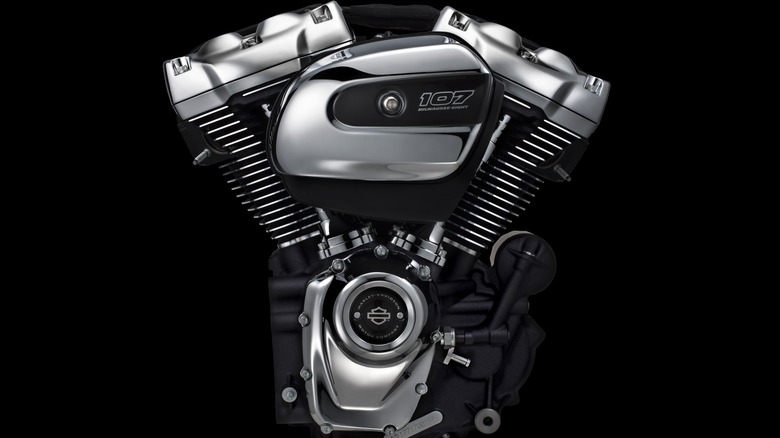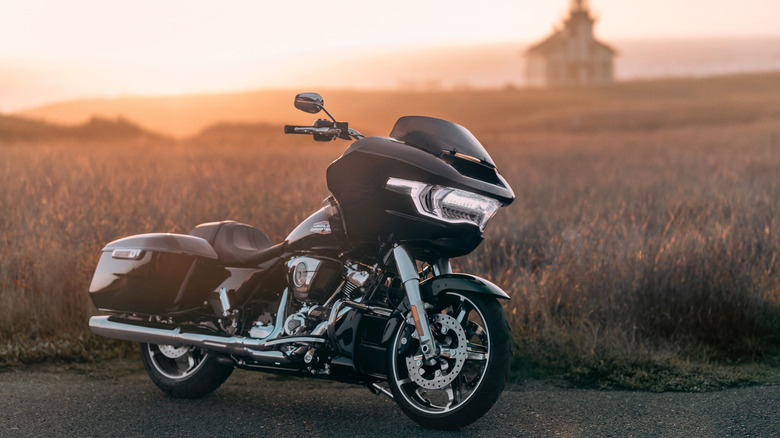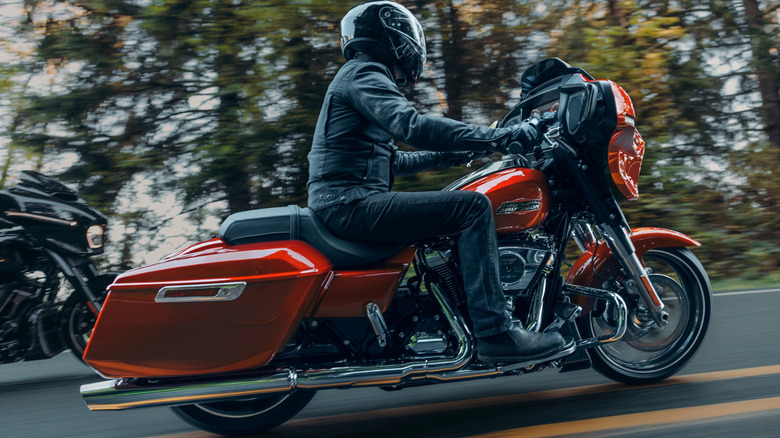Why Harley-Davidson Developed The Milwaukee-Eight Engine (And What It Powers)
It's no secret that Harley-Davidson is one of America's best and most iconic motorcycle engine manufacturers. With a layered history that dates back to 1903, the company has proven itself time and time again that it can not only put out timeless, trendsetting bikes but also powerful engines that are among the best in their classes.
From its earliest engines, like the single-cylinder engine that powered the Model 0, the company's first prototype, and the 24.74-cubic-inch inlet-over-exhaust single-cylinder engine that powered its first motorcycle, the Harley-Davidson Model 1, to some of its notable entries like the Panhead, Shovelhead, Knucklehead, and the Revolution engine. The company has constantly pushed the boundaries on what motorcycle motors can achieve.
On August 23, 2016, Harley introduced the Milwaukee-Eight engine, another powerful notch in its long line of beloved engines. The company cited the need to provide its riders with an engine that was true to Harley-Davidson's touring roots, fostering a better, more comfortable touring experience. The result would be an engine that featured improved heat and vibration management systems for smoother rides and a larger displacement and higher compression ratio for more powerful output. Furthermore, the engine was more fuel-efficient and adhered to current emissions laws. Let's review everything about the Milwaukee-Eight, from how it delivers on all the improvements it boasts to its variants and the bikes it features on.
It was all about enhancing the overall touring experience
The Milwaukee-Eight, named after the company's place of origin (Milwaukee, Wisconsin) and the number of valves in its cylinders, was Harley's answer to a number of rising issues that time had saddled upon its Twin Cam engine, which the Milwaukee-Eight was set to replace. Among these issues were overall power output, fuel efficiency, and emissions, which were gradually falling short of mid-late 2010s standards.
To tackle these problems, the Milwaukee-Eight featured a larger displacement, a higher compression ratio, eight valves (two per cylinder) with improved flow capacity, and dual spark plugs for each cylinder, all of which helped enhance power output and fuel efficiency while lowering emissions. Despite all these improvements, the engine was also lighter, thanks to features like a single chain-driven camshaft, which led to faster acceleration times.
Many bikers understand that heat and vibration are usually one of the key issues one faces while out on the road, especially if you're on a tourer, which is known for long rides. These two issues appeared to be major pain points for Harley-Davidson during the development of the Milwaukee-Eight, which is why the company incorporated a bike-specific precision cooling system, a redesigned exhaust, rubber mounting for the engine, and an internal counterbalance to reduce engine vibrations. The result is an engine that vibrates less and causes less thermal discomfort than its predecessors.
Many of Harley-Davidson's tourers, trikes, and cruisers come with the engine equipped
Today, the Milwaukee-Eight powers many of Harley-Davidson's tourers, cruisers, and trikes. Let's start with the original three, the first of which was the 1750cc Milwaukee-Eight 107, which debuted with the 2017 Road King, Road Glide, Road Glide Special, Freewheeler, Street Glide, Street Glide Special, and Electra Glide Ultra Classic. Alongside this motor was a similar displacement engine, designated as a Twin-Cooled Milwaukee-Eight 107. It debuted in the Road Glide Ultra, Tri Glide Ultra, Ultra Limited, and Ultra Limited Low. Finally, Harley offered a massive 1870cc variant of Milwaukee-Eight, the Twin-Cooled 114, powering the CVO Limited and CVO Street Glide.
In 2019, following the reception of the Milwaukee-Eight, Harley-Davidson introduced the 117 variant, a 1923cc that was featured on some of its touring and CVO motorcycles. However, the company made moves to include this engine on its Softail models, such as the Low Rider S and ST, Fat Boy, Breakout, Street Bob, and the Heritage Classic.
Harley-Davidson would also introduce the Milwaukee-Eight VVT 121 in 2021, a 1,977cc engine that debuted on select Harley-Davidson tourers. The most prominent variant of this engine was found on the CVO Street Glide and CVO Road Glide models. A 127-horsepower High Output version would come as standard on the company's revered CVO Road Glide ST.


